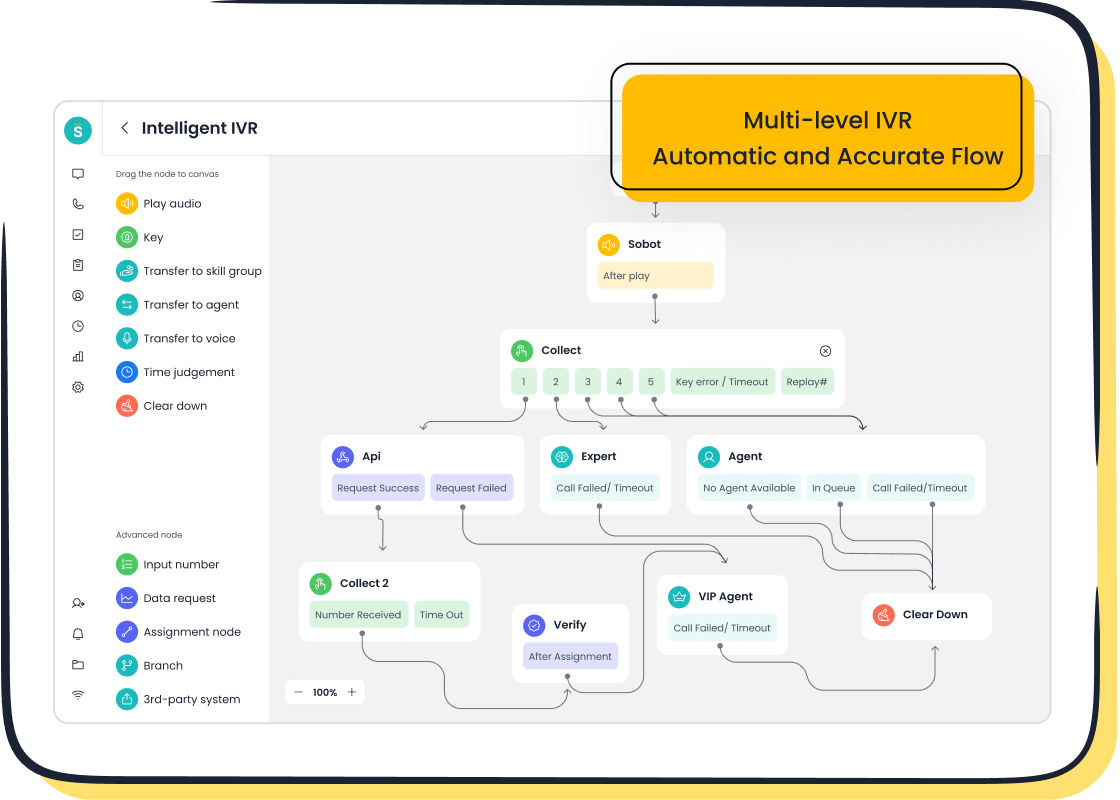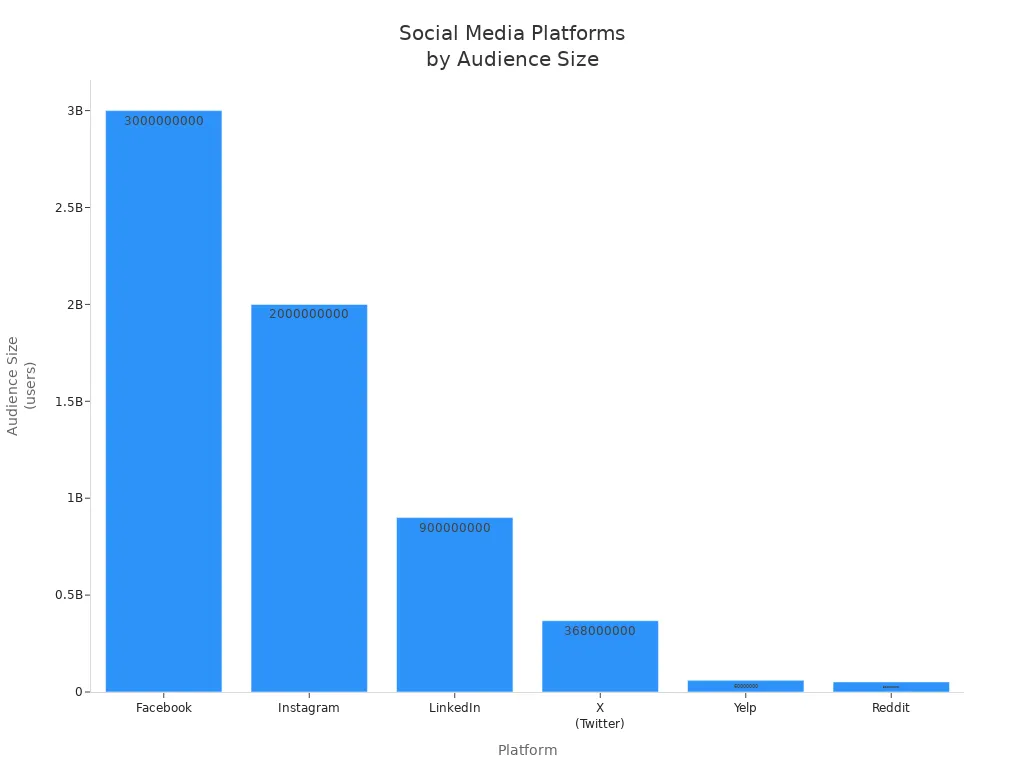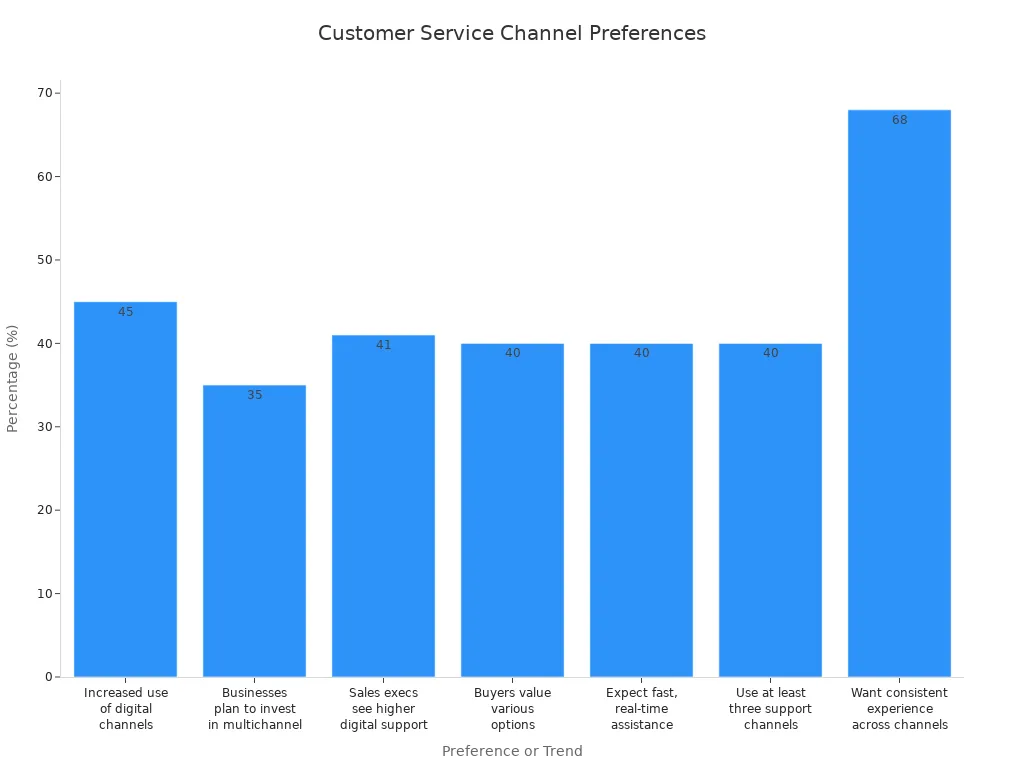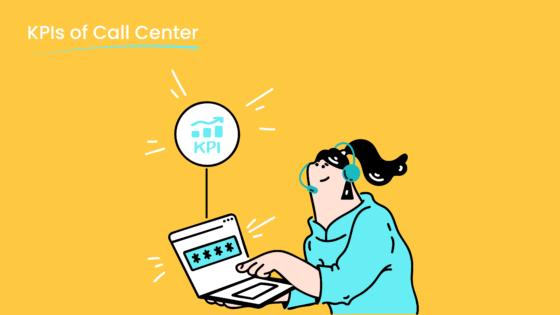What businesses need to know about customer service channels

Understanding customer service channels is key for your business growth. Customers expect fast, personal responses across every touchpoint. When you offer the right customer service channel, you boost efficiency and build trust. Research shows 75% of customers want seamless experiences on six or more channels, and 88% will buy again after great customer service. Companies using integrated solutions like Sobot AI and the Sobot call center cut wait times by 39% and see higher loyalty. Reflect on your current approach—are you meeting your customers where they need you most?
Types of Customer Service Channels

You have many options when choosing how to connect with your customers. Understanding the different types of customer service channels helps you meet customer needs and improve satisfaction. Each channel has unique strengths and works best for certain situations. Let’s explore the main types of customer service channels and see how you can use them to build better customer support.
Phone Support
Phone-based customer support remains one of the most important types of customer service channels. Nearly 80% of customers in the US consider the phone channel important for communicating with businesses, especially for personal or urgent matters. Many customers prefer phone support for complex issues because it allows real-time, direct conversations. You can build trust and show empathy through your voice.

Sobot’s Voice/Call Center gives you a stable, global solution for phone-based customer support. You can use features like intelligent IVR, smart call routing, and AI-powered voicebots to handle calls efficiently.
Here is a quick look at the advantages and disadvantages of phone-based customer support:
| Advantages of Phone Support | Disadvantages of Phone Support |
|---|---|
| Personal connection and empathy | Agents can only handle one call at a time |
| Handles complex issues well | Wait times can be long |
| Fast resolutions for urgent problems | Scalability is limited |
| Calls can be recorded for quality | Not always available 24/7 |
Many types of customer service channels exist, but phone-based customer support is still essential for high-value or sensitive conversations.
Email Support
Email-based customer support is another popular type of customer service channel. It works well for non-urgent, detailed issues. Customers can explain their problems clearly and attach files or screenshots. Email-based customer support is formal and provides a written record of the conversation.
Most businesses aim to respond to emails within 12 to 24 hours, but the best companies reply in under 4 hours. Email-based customer support is effective for complex issues, but it may not be fast enough for urgent needs. Sobot’s omnichannel platform includes a ticketing system that turns emails into manageable tickets, making it easier for your team to track and resolve issues.
Tip: Use email-based customer support for detailed questions or when customers need to send documents.
Live Chat
Live chat customer support is one of the fastest-growing types of customer service channels. You can offer real-time help on your website or app. Customers love live chat because they get instant answers. About 73% of customers say live chat is the most satisfying way to communicate with a business. If you do not offer live chat support, you risk losing sales—50% of adults will abandon a purchase if they cannot get a quick answer.
- Live chat customer support increases conversion rates by up to 20%.
- Customers who use live chat spend 60% more per purchase.
- 62% of online shoppers would buy more if live chat support was available.
Sobot’s omnichannel solution lets you manage live chat, tickets, and messages from all channels in one workspace. You can also use AI-powered chatbots to handle simple questions, freeing your agents for more complex issues.
Social Media
Social media is now a key part of modern customer service methods. Over 90% of Fortune 500 companies use social media for customer support. Nearly half of all social media users expect to get help through these platforms. Customers want fast replies—83% of Twitter users and 71% of Facebook users expect a response the same day.
Here are the most popular social media platforms for customer service:
| Platform | Audience Size | Top Benefits |
|---|---|---|
| 3 billion users | Easy to find, quick replies, chatbots | |
| 2 billion users | Real-time conversations, DMs | |
| X (Twitter) | 368 million users | Fast replies, humanizes brand |
| 900 million users | Showcases reputation | |
| 52 million daily users | Builds community | |
| Yelp | 60 million monthly users | Brand visibility |

Sobot’s omnichannel platform helps you manage social media messages, so you never miss a customer inquiry. You can set up automated replies and route complex issues to the right team.
Self-Service Options
Self-service portals are one of the most effective types of customer service channels. About 81% of customers try to solve their problems on their own before contacting a support agent. Self-help customer support tools like FAQs, knowledge bases, and video tutorials give customers instant answers any time of day.
| Self-Service Option | Key Benefits | Ideal Use Cases / Notes |
|---|---|---|
| FAQs | Instant answers; reduces workload | Best for common questions; needs updates |
| Knowledge Base | Detailed guides; always available | Good for complex topics; needs maintenance |
| Video Tutorials | Visual learning; reduces queries | Great for showing processes; needs resources |
| Chatbots | 24/7 help; handles many chats at once | Best for high volume, simple tasks; needs training |
| Automated Phone Systems (IVR) | 24/7 support; routes calls | Good for many calls; must be user-friendly |
| Community Forums | Peer support; builds loyalty | Encourages engagement |
| Self-Service Portals | Account management; order tracking | Lets customers manage their own data |
| Virtual Assistants | Advanced AI help; handles complex queries | Powerful with other tools; higher cost |
Sobot’s AI-powered chatbot and self-service portals let your customers find answers quickly. You can reduce the workload on your support team and improve customer satisfaction.
AI and Chatbots
AI and chatbots are changing the way you deliver customer support. By 2025, 80% of companies will use or plan to use AI-powered chatbots in their customer service channels. Chatbots can answer simple questions 24/7 and escalate complex issues to human agents. In retail, chatbot spending is expected to grow from $12 billion in 2023 to $72 billion by 2028.
- AI chatbots provide instant responses and can handle thousands of conversations at once.
- They help you scale your customer support without hiring more agents.
- Chatbots can automate tasks like password resets and refunds.
Sobot’s AI-powered chatbot supports multiple languages and integrates with your existing systems. You can use it to provide self-help customer support, collect feedback, and guide customers through common issues.
Note: While AI chatbots are fast and scalable, they may not always understand complex or emotional issues. You should combine them with other types of customer service channels for the best results.
In-Person Support
In-person support is one of the traditional types of customer service methods. Some customers still prefer face-to-face help, especially for high-value purchases or sensitive issues. You might offer in-person support in retail stores, service centers, or through field agents. This channel allows you to build strong relationships and trust with your customers.
In-person support works best when combined with digital channels. For example, you can let customers book appointments online or follow up with email-based customer support after a store visit. Sobot’s omnichannel solution helps you track all customer interactions, whether they happen online or in person.
Tip: Use in-person support for situations where a personal touch matters most, such as product demos, repairs, or consultations.
You have many types of customer service channels to choose from. Each type has its own strengths and works best for different situations. By combining these types of customer service methods, you can meet your customers’ needs and deliver excellent customer support. Sobot’s all-in-one platform helps you manage every channel in one place, making it easier to provide fast, personal, and effective support.
How Customer Service Channels Work
Real-Time vs. Asynchronous
You can choose between real-time and asynchronous customer service channels. Real-time channels, like phone calls and live chat, let you talk to customers instantly. These types of customer service channels work best for urgent or complex issues. You give focused attention and solve problems quickly. Customers feel heard and valued.
Asynchronous channels, such as email or social media messaging, allow customers to send messages and get replies later. These types offer flexibility. Customers can reach out at any time, even outside business hours. You can use AI chatbots and automated workflows to manage these conversations. Asynchronous channels help you support customers across different time zones.
-
Benefits of Real-Time Channels:
- Immediate answers
- Personal connection
- Quick problem-solving
-
Benefits of Asynchronous Channels:
- Customers reply at their own pace
- Agents can research before responding
- Good for global support
Sobot’s omnichannel platform lets you manage both real-time and asynchronous customer service channels in one place, making your team more efficient.
Personalization
Personalized service makes a big difference in customer loyalty. When you use customer data to tailor each interaction, customers feel valued. According to a 2023 Medallia survey, 82% of consumers say personalized experiences influence their brand choice in at least half of shopping situations. You can use CRM systems and AI to track customer preferences and past interactions. This helps you deliver the right message at the right time.
- Personalization means more than using a customer’s name. You should remember their history and needs.
- Omnichannel consistency ensures customers get the same quality of service on every channel.
- Sobot’s unified workspace gives your agents access to customer profiles, so you can offer a seamless customer journey.
Scalability
Each type of customer service channel has its own scalability challenges. You need to plan for growth as your customer base expands. The table below shows common issues:
| Customer Service Channel | Scalability Challenges |
|---|---|
| Phone Support | Needs more staff; longer wait times |
| Email Support | Slow replies; message overload |
| Live Chat Support | High workload; constant staffing |
| Social Media Support | Rapid response expected; high volume |
| SMS & Messaging Support | Message limits; privacy concerns |
| Self-Service Support | Needs updates; some issues need escalation |
| Video Chat Support | High resource demand; agent limits |
Sobot’s AI-powered chatbots and automation tools help you scale support without hiring more agents. You can handle more requests and keep the customer experience strong.
Customer Preferences
Customers want choices. Recent surveys show 45% of customers use more digital channels than before. Many prefer social media, live chat, or messaging apps. About 40% expect fast, real-time help, and 68% want a consistent experience across all channels. You need to offer multiple types of customer service channels to meet these needs.

Sobot’s omnichannel solution helps you deliver a consistent customer service experience, no matter which channel customers choose. This approach keeps your customers happy and loyal throughout their customer journey.
Choosing the Right Customer Service Channel

Selecting the right customer service channel helps you meet your customers’ needs and reach your business goals. You need to think about what your customers want, what your company aims to achieve, what your industry expects, and what resources you have. Each of these factors shapes how you deliver customer support and which types of channels work best for your business.
Customer Needs
You must start by understanding your customers. Different groups prefer different types of customer service channels. For example, 59% of people still like phone calls for urgent help, while younger customers often choose live chat or social media. Some customers want fast answers, so they use live chat or messaging apps. Others need detailed help and prefer email or in-person support. You should look at your customers’ habits and ask for feedback. Sobot’s omnichannel platform lets you track which channels your customers use most, so you can adjust your customer support strategy.
Tip: Always offer more than one customer service channel. This way, you meet the needs of all your customers and keep them satisfied.
Business Goals
Your business goals shape your customer service channel choices. If you want to lower costs, you might use more self-service options or AI chatbots. If you want to build strong relationships, you may focus on phone or in-person support. Fast-growing companies often need channels that scale easily, like live chat or automated systems. Sobot’s solutions help you match your customer support to your goals. For example, Opay used Sobot’s omnichannel platform to improve customer satisfaction by 30% and cut costs by 20%. You can read more about Opay’s success here.
Industry Standards
Every industry has its own standards for customer service. Most customers expect you to be available on the channels they use every day. In retail, live chat and social media are popular. In finance, secure phone and email support are common. Research shows that 93% of consumers spend more with companies that offer their favorite customer service channel. Industry standards also say you should answer quickly—70% of customers expect a reply on social media within 24 hours. Sobot’s Voice/Call Center and omnichannel tools help you meet these standards by making it easy to manage all types of customer support in one place.
Resource Allocation
You need to think about your resources before adding a new customer service channel. Each type of channel needs different tools, staff, and training. For example, live chat needs agents ready to respond right away, while email support can be managed with fewer people. You also need the right technology, like CRM systems or chatbots, to keep track of customer interactions. Sobot’s platform gives you the tools to manage all types of customer support efficiently. You can use automation to handle simple questions and let your team focus on complex issues.
| Channel Type | Staff Needed | Technology Required | Cost Level |
|---|---|---|---|
| Phone Support | High | Call Center, IVR | Medium-High |
| Email Support | Medium | Ticketing System | Low |
| Live Chat | High | Chat Platform, AI Bot | Medium |
| Social Media | Medium | Social Inbox, Analytics | Medium |
| Self-Service | Low | Knowledge Base, Chatbot | Low |
Note: Review your current customer service channels often. This helps you spot gaps and make sure you use your resources wisely.
Choosing the right customer service channel means thinking about your customers, your goals, your industry, and your resources. When you use a platform like Sobot, you can manage all types of customer support in one place and give your customers the service they expect.
Optimizing Customer Support with Sobot
Omnichannel Integration
You can transform your customer support by integrating all your channels into one unified platform. Sobot’s omnichannel customer support solution brings together phone, email, live chat, social media, and messaging apps. This integration gives your team a single view of every customer interaction. You avoid missed messages and repeated questions. Customers get consistent answers, no matter how they reach out.
Here are some key benefits of omnichannel customer support integration:
- Companies using omnichannel AI strategies see an 89% average customer retention rate.
- Businesses experience a 287% increase in purchase rates with omnichannel engagement.
- OPPO achieved an 83% chatbot resolution rate and a 57% increase in repurchase rate after using Sobot’s AI-driven chatbot.
| Benefit | Impact |
|---|---|
| Increased Customer Satisfaction | CSAT improved by 30% with seamless omnichannel support |
| Improved Agent Efficiency | 30% more efficient as AI handles repetitive queries |
| Unified Platform | All channels in one place for a complete customer view |
| Consistent Experience | Customers get the same quality service on every channel |
| Proactive Engagement | Agents reach out using unified data and AI insights |
You can read more about these results in industry reports.
AI and Automation
AI and automation make your customer support faster and smarter. Sobot’s platform uses AI-powered chatbots and voicebots to answer common questions instantly. Automation routes complex issues to the right agent, so customers do not wait long. You can use AI to send proactive updates, recommend help articles, and even detect customer emotions.
- AI chatbots reduce inbound call handling time by 38%.
- Automation handles repetitive tasks, freeing agents for more complex customer service needs.
- Sobot’s AI learns from every interaction, so your customer support keeps improving.
Tip: Use automation for basic queries and let your team focus on building relationships.
Performance Analytics
You need to measure your customer support to keep improving. Sobot’s omnichannel customer support platform gives you real-time analytics. You can track key metrics like:
- First Response Time (FRT): How fast your team replies to customers.
- Resolution Rate: The percentage of issues solved on the first try.
- Customer Satisfaction Score (CSAT): How happy customers are with your support.
- Customer Effort Score (CES): How easy it is for customers to get help.
- Net Promoter Score (NPS): How likely customers are to recommend your business.
These metrics help you spot trends, fix problems, and reward top performers. You can use analytics to balance workloads and improve your customer service strategy.
Team Training
Your customer support team needs the right training to use new channels and tools. Sobot recommends these best practices:
- Set clear workflows and goals for every channel.
- Identify gaps in your current customer service approach.
- Use different training formats—videos, workshops, and hands-on practice.
- Include role-playing and real-life scenarios to build confidence.
- Encourage ongoing learning and feedback.
- Foster teamwork and a supportive culture.
- Keep a knowledge base updated so agents can find answers fast.
When you invest in training, your team delivers better customer support across every channel. Sobot’s platform makes it easy to onboard new agents and keep everyone up to date.
Remember: Great customer support starts with the right tools, clear processes, and a well-trained team. Sobot helps you optimize every step of your customer service journey.
Best Practices for Customer Service
Continuous Improvement
You need to keep improving your customer service to stay ahead. Start by investing in employee training. Teach your team skills like active listening, problem-solving, and empathy. These skills help you deliver proactive customer service every day. Use technology such as CRM systems, AI chatbots, and analytics tools to manage customer interactions and spot trends. Sobot’s omnichannel platform gives you these tools in one place, making it easier to track progress and find areas to improve.
Follow these steps for continuous improvement:
- Set clear goals and measure performance with KPIs like response time and customer satisfaction.
- Encourage your team to share feedback and ideas for better customer service.
- Balance automation with a human touch. Let AI handle simple tasks, but keep people involved for complex issues.
- Celebrate successes and recognize team members who show great proactive customer service.
Companies like Toyota use the Kaizen philosophy, which means making small changes every day. This approach helps you adapt quickly and keep your customer service strong.
Monitoring Satisfaction
You must monitor customer satisfaction across all your channels. Collect feedback from every touchpoint, such as live chat, email, phone, and social media. Sobot’s unified workspace lets you centralize feedback, so you never miss important insights. Segment feedback by customer type or product to spot patterns and improve your proactive customer service.
Try these methods to monitor satisfaction:
- Use surveys after each interaction, like in-app or email surveys.
- Apply both qualitative and quantitative analysis. Look at scores and read comments.
- Use analytics and sentiment analysis to understand how customers feel.
- Close the feedback loop by letting customers know you heard them and acted on their input.
When you monitor customer satisfaction regularly, you can make changes that boost loyalty and trust. According to Harvard Business Review, companies that lead in customer experience grow revenues 4-8% above their market.
Adapting to Change
Customer service needs change fast. You must stay flexible and ready to adjust. Watch for new trends, like customers using more messaging apps or expecting faster replies. Sobot’s platform helps you adapt by supporting new channels and updating features as customer needs shift.
To keep your customer service effective:
- Train your team on new tools and channels.
- Review your processes often and update them when needed.
- Listen to customer feedback and act quickly.
- Use data to spot changes in customer behavior.
Proactive customer service means you do not wait for problems. You look for ways to improve before issues arise. This approach keeps your customer service fresh and helps you meet new expectations.
Tip: Make adaptability part of your company culture. Encourage your team to learn, try new things, and share what works best.
Choosing the right customer service channels shapes your business success. You improve customer support when you use tools like Sobot’s omnichannel platform and Voice/Call Center. To keep your customer service strong, follow these steps:
- Set clear metrics for customer support, such as NPS and CSAT.
- Analyze both short-term and long-term results.
- Adjust your customer service strategy based on what you learn.
Regular reviews help you meet changing customer needs. Start by evaluating your current customer support or explore Sobot’s solutions for better results.
FAQ
What is the most popular customer service channel today?
Live chat is now the most popular customer service channel. Over 73% of customers say they prefer live chat for quick help. You can use Sobot’s omnichannel platform to add live chat and improve your customer support. Source
How do I choose the right customer service channel for my business?
You should look at your customers’ habits and needs. For example, younger customers often use social media, while others prefer phone support. Sobot’s analytics help you track which customer service channel works best for your audience.
Can I use more than one customer service channel at the same time?
Yes! You can use several customer service channels together. This approach is called omnichannel support. Sobot lets you manage phone, email, chat, and social media in one place. This makes your support faster and more consistent.
Tip: Offering more than one customer service channel helps you reach more customers and solve problems faster.
How does AI improve customer service channels?
AI chatbots answer simple questions 24/7. They help you handle more requests without hiring more staff. Sobot’s AI-powered chatbots support many languages and connect with your other customer service channels for smooth support.
See Also
Comprehensive Overview Of Omnichannel Call Center Solutions
Top Ten Tips For Selecting Social Media Support Tools
Step By Step Guide To Deploy Omnichannel Contact Centers